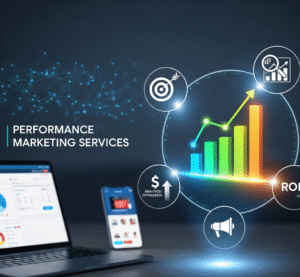
The promise of transforming healthcare accessibility is associated with the development of on-demand doctor apps. Codeflash Infotech is one company that has been making notable progress in this area. In this blog, we explore the essential elements of developing on-demand medical apps, examine the creative solutions provided by Codeflash Infotech, discuss the critical idea of RESOLVE, and throw light on the important factor of development costs. The future of healthcare delivery is being shaped in large part by on-demand doctor app development company like Codeflash Infotech, which are helping the healthcare sector embrace the digital revolution.
Important Elements of Doctor-On-Demand Apps
Naturally, there are too many features to cover in one article, but let’s talk about the most intriguing ones that come to mind while developing a doctor-on-demand app.
- APPROVAL
When consumers need to enter the bare minimum of information to receive the greatest benefit right away, registration and sign-in become thrilling. Make use of 2-factor authentication and FaceID/TouchID.
- YOUR PROFILE
Here, patients may review their treatment plans, health histories, visit histories, and other data.
Settings: All the small options, including feedback, dark mode, FAQ, and sensor integrations, that don’t actually need their panel are located here.
- ALERTS
Patients will arrange virtual visits. Therefore, it’s critical to remind them of their impending appointments so they can receive medical assistance on time. Reminders for pending prescription refills, new service or campaign advertisements, and medicines can also be included in notifications.
- In-the-moment chat
For any doctor-on-demand program to function, real-time chat communication with doctors is essential. If you could envision doctors using images and videos to diagnose patients and people reviewing their results on the app, it would be beneficial.
- Calls using audio and video
Leverage pre-built Telehealth Components for seamless audio-video interactions in doctor-on-demand apps, saving development time.
- Scheduling of Appointments
Assigning patients to the appropriate medical specialists based on their symptoms is closely related to one-tap scheduling. Our HIPAA-compliant no-code component enables patients to book an appointment without having to write complex code.
- Physician Look-Up
To enable consumers to examine user ratings, reviews, and other information, a list of all pertinent doctors ought to be included.
- MEDICAL DATA
Our medical histories are already stored in Google Fit or Apple Health. Nevertheless, a doctor-on-demand app may have more detailed information about these same records or contain data that isn’t included in the default iOS and Android health applications.
- REMITTS
The ability for patients to add their insurance and credit ID cards is a must. Every bill will be seen there.
- TRIAGE, CHATBOT, AND TRANSLATIONS ARE ADVANCED AI FEATURES
While AI isn’t a feature in and of itself, we can use this technology to create an intelligent chatbot that will aid with triage. Alternatively, to serve more clients, we may provide automatic translation. When it comes to integrating AI/ML capabilities into doctor-on-demand software, that’s only the beginning.
- 3RD-PARTY INTEGRATIONS
A complete doctor-on-demand app ought to interface with payers and pharmacists. It may also be necessary for us to interface with older systems.
- ADMIN PANEL OPTIONS
Naturally, there are several choices for controlling the entire ecosystem as well as for suppliers. To go over them all would require a second blog. Therefore, get in contact to talk about your unique demands.
Challenges of Building On-Demand Doctor Apps
You have several obstacles while developing a doctor-on-demand application. How do you prevent them, and what are they? These are some typical difficulties.
- SUPPLY-DEMAND MATH
Should your mobile application for doctor-on-demand services resemble Zocdoc, you’ll have to figure out the supply and demand issue. Physicians should be able to select from a variety of options on the app before committing, just as new users should.
Facilitating the onboarding process and ensuring a seamless experience for providers should be beneficial. If you work with a clinic or hire physicians, this process becomes simpler because all that has to be done is transfer the doctor database into the app.
- UNIQUENESS
If you’re aiming for an aggregation kind of software, having distinctive features is important. For many healthcare professionals who wish to include telemedicine and improve the patient experience, this is different, though.
After all, you can only interface with a given number of insurance providers and implement a specific amount of features. Consequently, offering a silky-smooth user experience becomes crucial.
- EHR, APPLE HEALTH, AND OTHER INTEGRATIONS
A lot of patient data is stored on the cellphones of specialized health services such as Samsung Health, Google Fit, and Apple Health. Therefore, this medical history information has to be in sync with the EHR that the physicians are using.
Integrating with legacy solutions—which might include CRMs, practice management platforms, and other solutions—is something else to think about.
- THE CURSE OF MULTIPLE FRONT ENDS
Count this: three apps: one for administrators, one for physicians, and one for patients. That brings the total to three, and may God provide you the ability to cover smartwatches and other platforms as well.
To avoid writing code for iOS and Android, the ideal alternative is to provide a web-based front end for providers. You might also attempt depending on pre-existing three-party solutions. For instance, let providers utilize Zoom or comparable HIPAA-compliant services if they require video calling.
Regarding the patient app, take advantage of React Native or other technologies that enable the simultaneous creation of doctor-on-demand mobile applications for iOS and Android.
- HIPAA COMPLIANCE
That ought to be standard for all healthcare software. I must stress, though, that even your software developer’s processes—not just the code—must comply with HIPAA regulations while they work feverishly to create doctor-on-demand apps.
Conclusion
In summary, Codeflash Infotech remarkable work embodies the fusion of cutting-edge technology and healthcare through On-Demand Doctor App Development. They establish a standard for the industry with their dedication to RESOLVE, which guarantees dependability, effectiveness, security, optimization, leverage, value, and perfection. The potential to improve patient outcomes and improve overall healthcare experiences justifies the investment, even though the development cost is a significant consideration. The relationship between technology and healthcare is growing increasingly evident as Codeflash Infotech and other On-Demand Doctor App Development company keep coming up with new ideas. This gives us a peek into a future in which getting medical treatment will not only be necessary but also a smooth and enjoyable experience.







